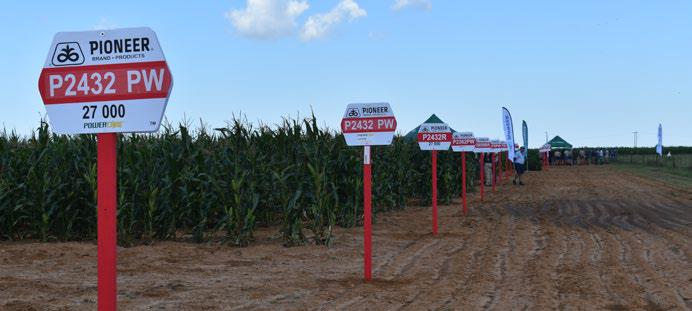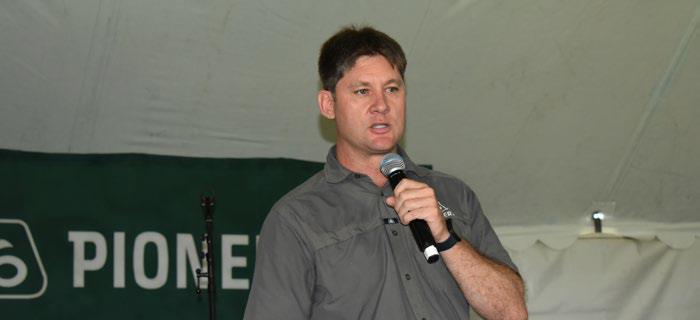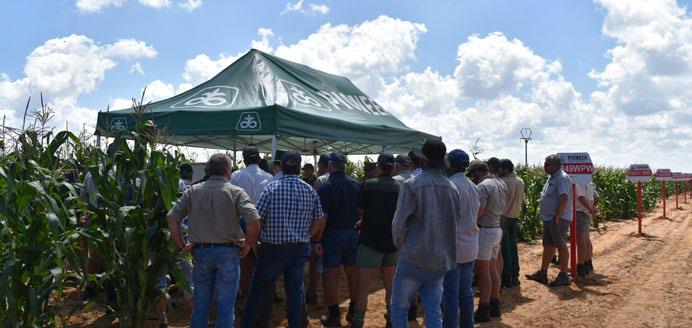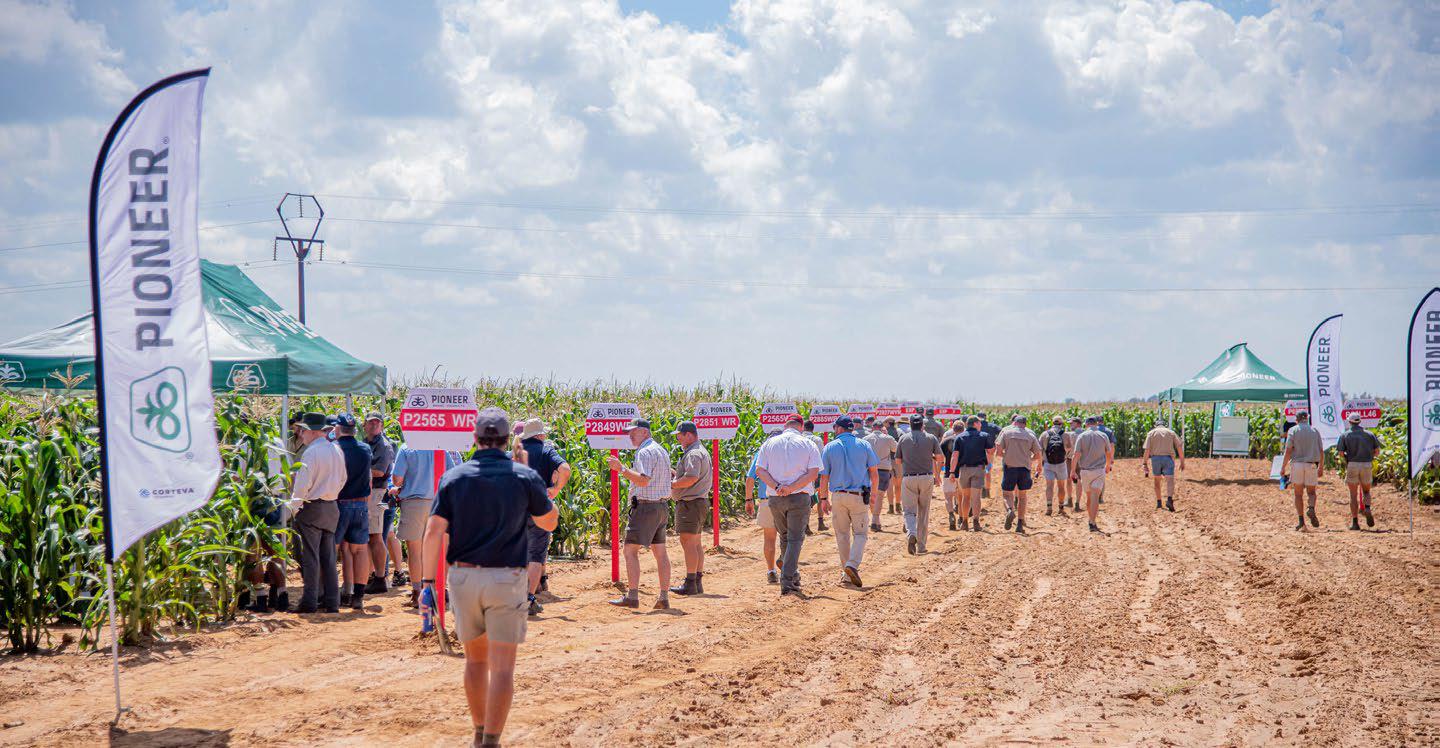Farmers in the Northwest will benefit greatly from the insightful tips and advice that Pioneers agricultural specialists provided to them at a recent farmer’s day which took place outside Sannieshof. Pioneer’s western region’s farmer’s day started six years ago on Louwrens van Wyk’s farm.
“We’ve been hosting this farmer’s day for several years,” says Nelis Potgieter, Pioneer’s Area Manager for the Northwest region. “This is an agronomic trial site, where we plant all our emerging products’ trials, including white maize, yellow maize, sunflowers, and soybeans, so that we can see the bigger picture and show farmers in the area what the potential of our products are, how they perform and how they compare to other products.”
Dirk van Niekerk, Sales Agent for the Sannieshof area in Lichtenburg-West, elaborates: “Over the years, with all the trials that have been planted here, we can already draw a correlation line to be able to reach an informed conclusion about which cultivars work performs the best in the western regions of the country. The results and trials that are harvested are specifically focused in this area, which also enables farmers to make informed decisions, about what works well.”

Nelis Potgieter, Pioneer’s area manager for Northwest, believes farmers in this area will have great yields in the coming season.
Charl de Wet, Sales Agent for Lichtenburg East, Coligny and Grootpan region, considers these farmers’ days as very important: “It is important for us to support the farmer and to be physically with them in the field. During the farmer’s day, several farmers consulted us about new products they want to plant. This makes us excited for the future, and that is, after all, the goal of farmers’ days.”
One of the topics that attracted a lot of attention was the new PowerCoreTM technology
PowerCoreTM technology was released in 2022. The main focus is to protect crops from hazardous above-ground insects, such as the maize stalk borer. PowerCoreTM technology also provides crops with herbicide-resistant properties.
Farmers benefit greatly from the introduction of the new Corteva technology. Chris van Zyl, of Corteva Seed Research and Development, explains how the company’s cutting-edge technology benefits farmers’ progress.
The pest-prevention technology pyramid consists of three different Bacillus thuringiensis (Bt) proteins that work together as broad-spectrum protection to control a wide variety of above-ground insects.
Chris says: “The combination of these three Bt proteins provides an effective way to protect crops against lepidopteran species. These PowerCoreTM items include Roundup, a crucial ingredient, which means that glyphosate can still be used on PowerCoreTM maize cultivars.
PowerCoreTM protection technology keeps lepidopteran maize pests effectively under control, and the fact that it works in more than one way delays the development of resistance.

Chris van Zyl from Corteva Seed Research and Development tells farmers more about the new PowerCoreTM technology at Sannieshof Farmers Day.
“This is of utmost importance because, just like the Bt maize, PowerCoreTM should also be planted in a refuge area, according to all the refuge area rules as stipulated and described in the catalogue,” explains Chris. The effectiveness of these measures to secure your maize has been proven over many years of testing in key maize-growing regions. It plays a crucial role in the control of insect resistance management (IRM).
Maize stalk borer (Busseola fusca)
This pest is the most damaging maize stem borer in South Africa and can be found at low to high altitudes (sea level to 2 000 metres). Throughout the South African maize production triangle, it is endemic.
The leaves, cobs, and stalks of the maize are all damaged by this pest. Critical protection against this pest is available through PowerCoreTM. Chris says that if you take care of your maize’s leaves, the plant will photosynthesise more efficiently and provide a higher quality end result, which will generate energy in the production of the head. The Maize stalk borer causes more damage prior to harvest season as well. Chris explains that it enters the head at the base and eats there. When the head dries out, the maize falls off because the base has been eaten away.

Farmers listening carefully to the information and advice Pioneer’s agronomists share with them at Sannieshof Farmers’ Day.
Spotted stem borer (Chilo partellus)
The stem-boring insect causes great damage to maize and sorghum fields. The caterpillars of the Spotted stem borer cause damage to these plants by tunnelling into the stems.
The stem borer eats the plume that carries the pollen of the maize plant. Therefore, the maize beard is not pollinated efficiently, which has a negative impact on the growth of the maize. The stem borer hollows the maize plant out, and the plant topples over when eaten from the top down.
Nelis concluded the farmers’ day with the following: “We are excited about the season that lies ahead. I expect that the western region will have above-average yields.”
For more information, visit Pioneer’s website at https://www.pioneer.com/za or send an email to info.rsa@pioneer.com.









